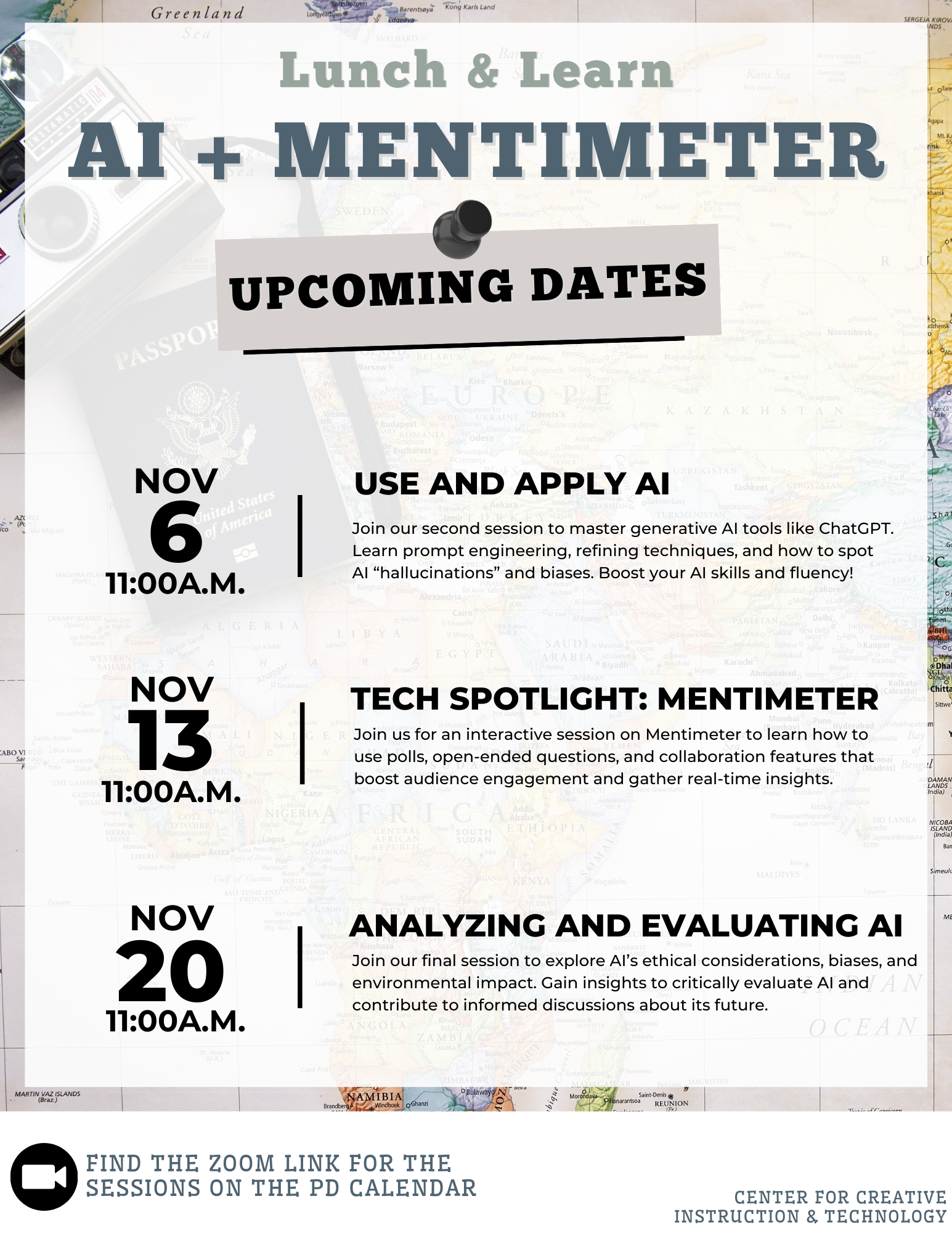
November 2024

Bloom's Taxonomy Learning Activities and Assessments
Bloom’s Taxonomy is a widely-used framework that helps instructors design effective learning experiences. It outlines six levels of cognitive skills, progressing from basic to advanced: Remember, Understand, Apply, Analyze, Evaluate, and Create. By guiding students through these stages, we can promote deeper learning and critical thinking.

Discover practical uses of Bloom’s Taxonomy by exploring our comprehensive table highlighting learning activities and assessments aligned with each level, helping you create more dynamic and engaging courses that support students at every stage of their educational journey. Use our Bloom’s Taxonomy Activities and Assessments resource to strengthen your lessons and better support student learning!

Padlet Power: Boost Creativity and Organization with AI
Last month, Lunch & Learn kicked off the Tech Spotlight series with an engaging session on Padlet. In this video, you’ll explore how to create dynamic, collaborative spaces using Padlet, including integrating its new AI features! Explore this tool through hands-on activities and practical examples to streamline workflows, boost creativity, and enhance participant engagement.
Dive into the Padlet Resources page to learn more about how to sign up for Padlet, review Padlet’s accessibility statement, and uncover ways to use Padlet in your course!

Interested in more EdTech tools? Join us for our Tech Spotlight series during Lunch & Learn!

Join CCIT for this month's learning opportunities:

Lunch and Learn
Every Wednesday at 11 am
Join us on Zoom

You can find out even more about these offerings and view past Lunch and Learns by clicking the button below to visit our Lunch and Learn webpage. The page also includes an accessible version of all the information for upcoming sessions.

CCIT Director Featured in D2L Blog Post
In a recent blog post on D2L’s platform, our own Sara Carter, Director of Instructional Design and Technology, discusses the impact of human-centered leadership at the Center for Creative Instruction and Technology (CCIT). Sara highlights how fostering a culture of trust, collaboration, and autonomy has been key to success in initiatives like scaling HyFlex courses and developing accessible HTML templates in D2L Brightspace. By empowering team members to take ownership and innovate, CCIT has embraced digital transformation in education. Sara emphasizes that effective leadership is about understanding and valuing people on the team to drive growth and change.
